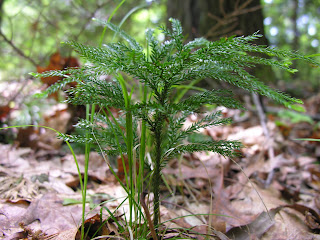







Nature, Natural History and How they Educate Us















Finally! More local wildlife! We find these little guys, the eastern red back (or backed depending on who you ask) salamanders under bricks in our yard through late spring and summer. They were out pretty early this year and I took this photo a few weeks ago. They aren’t the easiest critters to shoot because their little legs are so tiny that they often get lost in the dirt. But they don’t move much when exposed…maybe they’re afraid of giants.
They are widely found in eastern
They are an important part of the ecosystem both as a predator of vast amounts of invertebrate species including centipedes and larval insects and also as a food source for snakes, mammals and birds.
One thing I was wondering, which finally prompted me to do the research for this post, was how they would fair with this strange weather we’re having. It was quite warm for a while and they came out and now it is cold again, even freezing. But unlike many other amphibian species they do not seem to estivate or hibernate. During winter they stop shedding and have special body chemistry that keeps them from freezing. They will burrow underground and feed on insect eggs. Any time it gets warm enough, even in the middle of winter, they will come out to scavenge. So I guess they little guys are probably fine and have just burrowed back beneath the garden. One more headcount in the yard’s biodiversity.
Sources:
uri.edu
eol.org
eNature.com
Animal Diversity Web: University of Michigan Museum of Zoology
I’ve been meaning to look into the evolution of taste and food aversions in response to a question about why someone would dislike eating cucumber, a vegetable that is completely lacking in PTC, the compound found in Brussels sprouts, broccoli and other famously disgust-inducing foods. Frustratingly the two biology text books and the one cognitive science text book in my house have very little information on the senses of smell and taste. I think this is for a few reasons. First, the chemoreceptive senses, taste and smell, are still somewhat poorly understood by science. Second, we tend to favor vision and hearing because these are our “primary” senses which we use to understand our world. Our cognitive world is dominated by vision and audition in a way that makes our chemoreceptive senses seem almost like different things all together.
So the best answer I could come up with for why you would dislike a food that was not bitter is that you have been conditioned. You probably don’t even remember the incidents of conditioning as they more than likely happened in childhood and may have been subtle correlations between food and unpleasant sensations. I know for a fact though that many people are unable to eat foods that they ate when they had a cold, for example. So I imagine that it’s entirely possible to develop a life-long aversion through conditioning. Unfortunately I could find exactly zero information on food texture aversions. I imagine this could also have something to do with aversions to foods that do not contain PTC.
So even though I wasn’t able to find much on anything other than bitter molecule detection at the root of food aversion evolution what I did find was some interesting biological tidbits related to taste and smell. Taste and smell are essentially the same sense in that they are both examples of chemoreception or the detection of molecules and chemicals in our environments. The difference for us is that taste occurs in solutions and smell occurs when we detect molecules floating in the air. But for aquatic creatures there really is no distinction. Because every molecule they come into contact with is in solution they are both tasting and smelling at the same time. Also, for the most part, this is happening constantly. Skates, for example, have nasal passages above their mouths where water is constantly flowing. This allows them to continually monitor what’s in the water.
Another interesting chemoreception fact is that most insects and other arthropods do most of their chemoreception with their legs. This is one of my favorite facts that I share with people about the horseshoe crab but it extends to most other arthropods. They also tend to blur the line between tasting and smelling as they tend to have only one mode of chemoreception. Some can sense with antennae as well as legs and often will have specialized the use of their antennae to things like pheromones or other specific molecules. But the fly, for example, and the horseshoe crab do all their food selecting with their feet.
Hopefully I will find time to write more soon because I have some pretty good photos and want to share some info about salamanders and…more on horseshoe crabs. Let me tell you how amazing they are. Very!